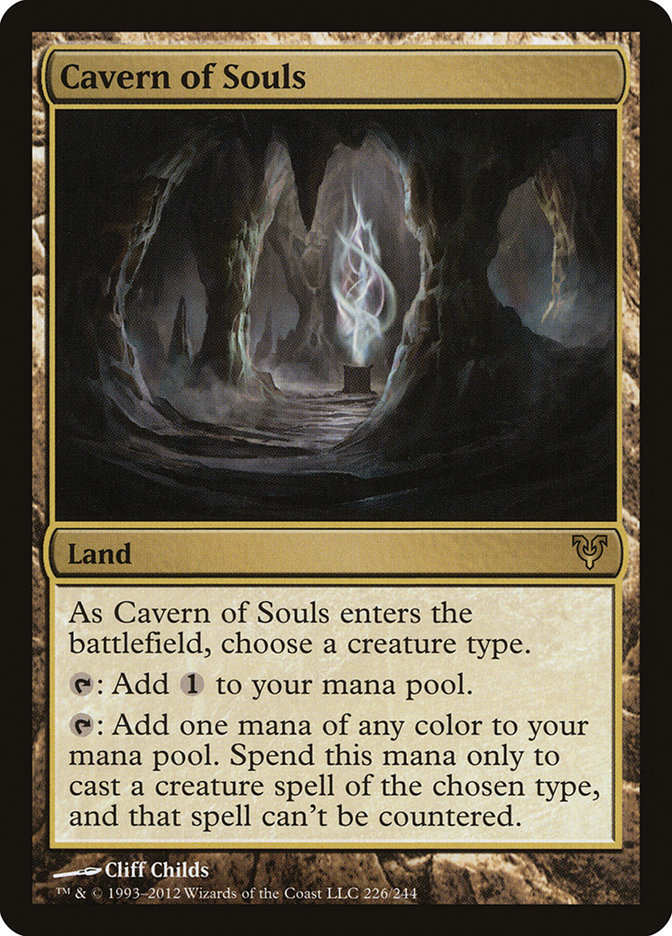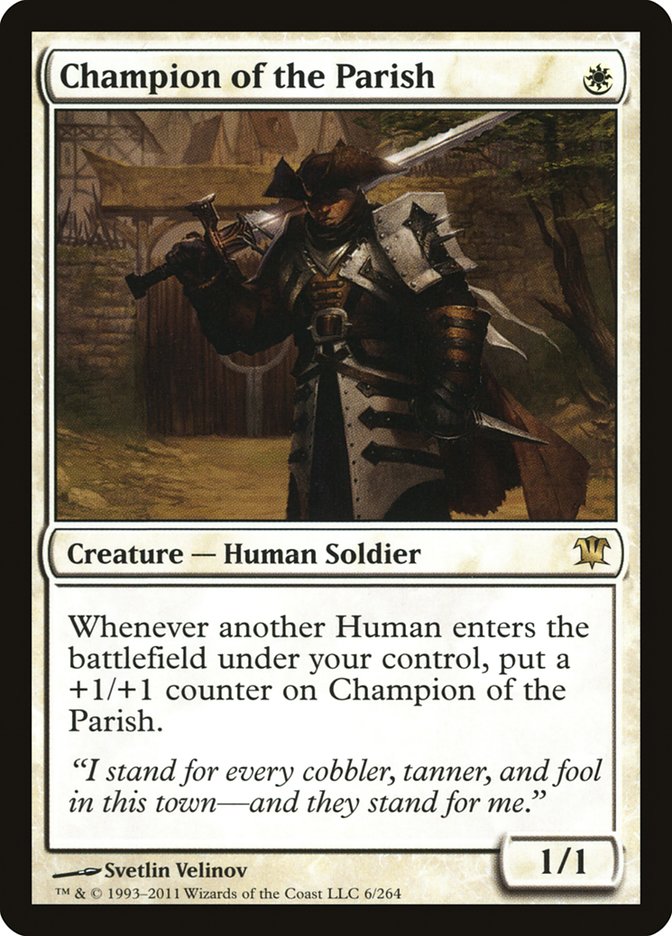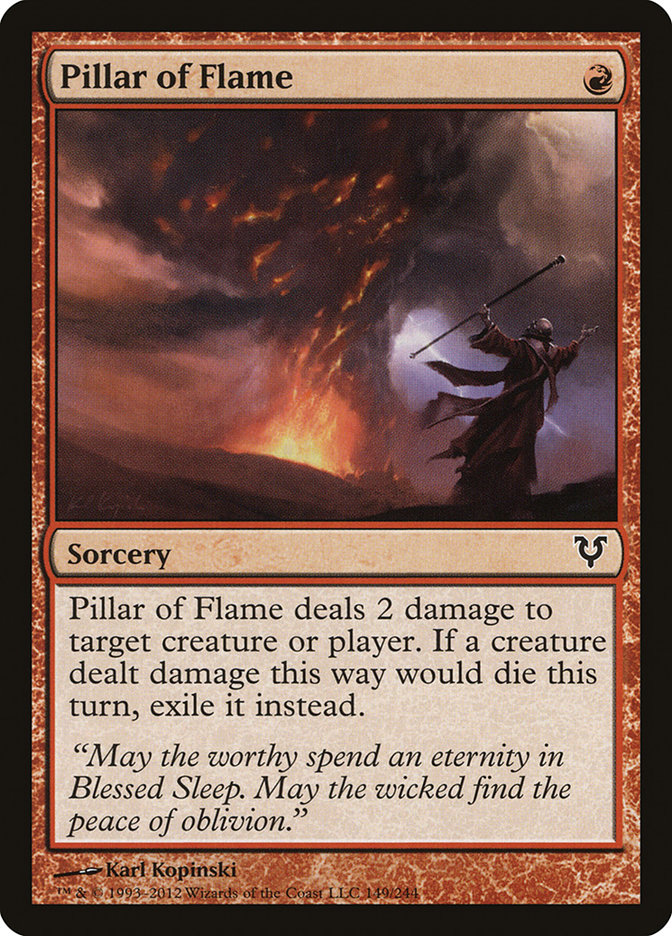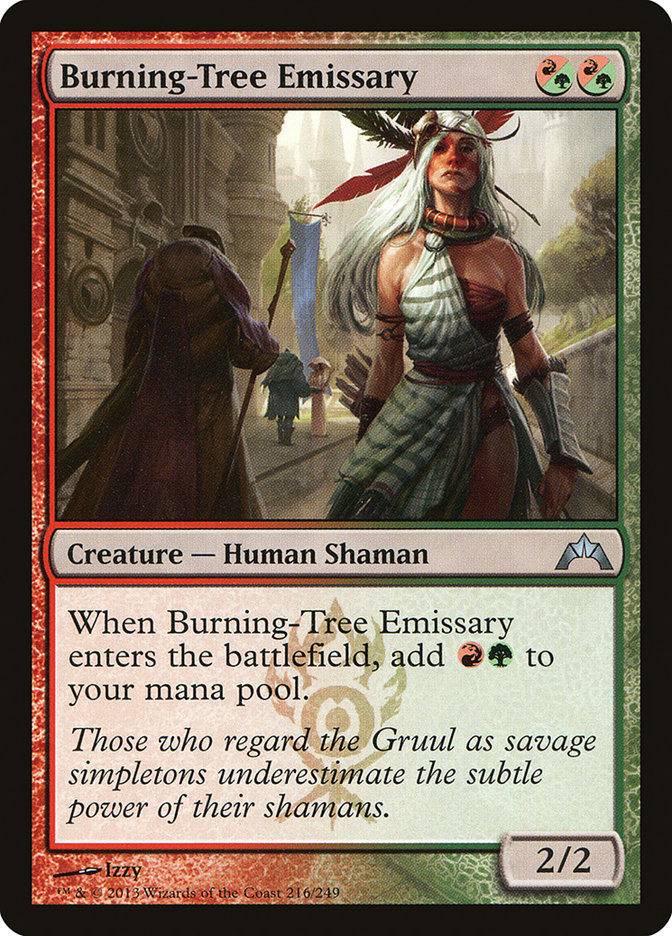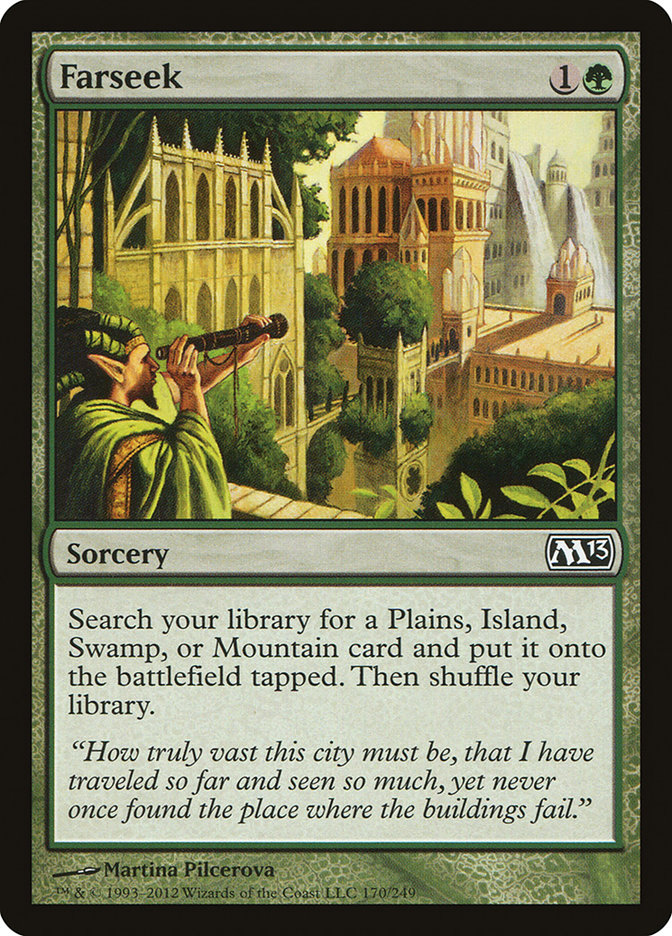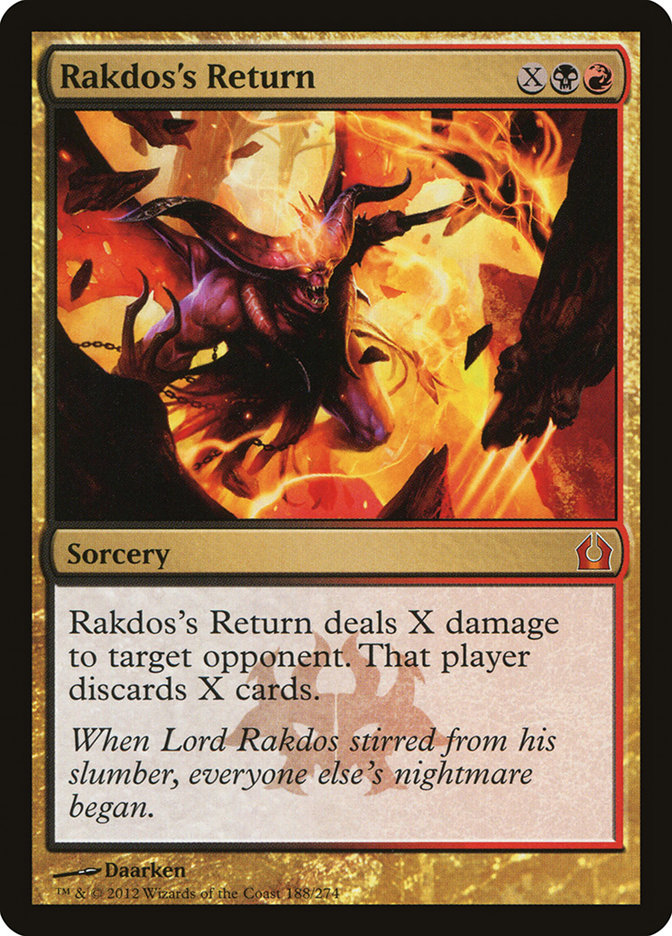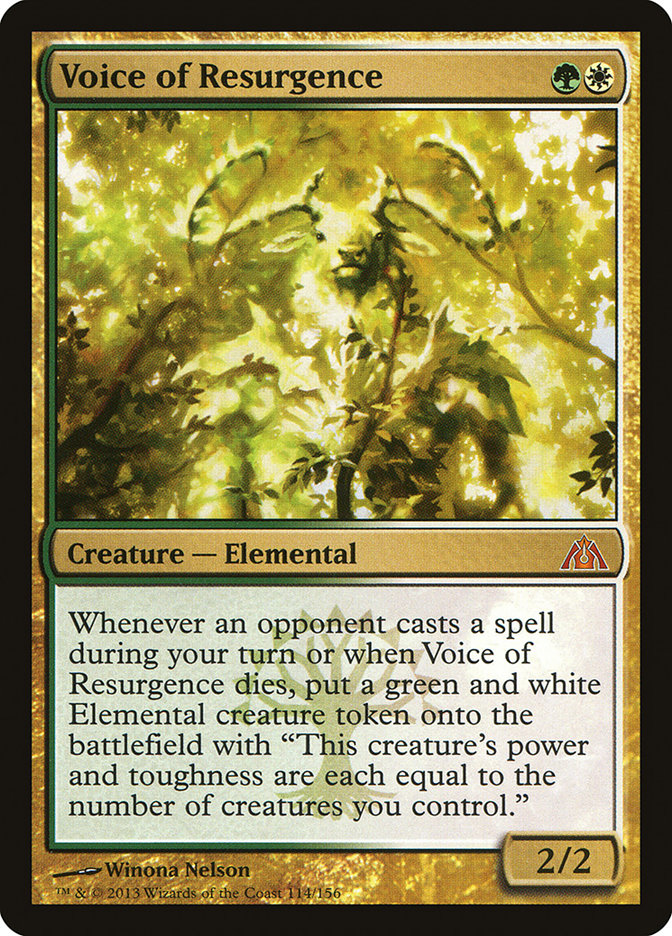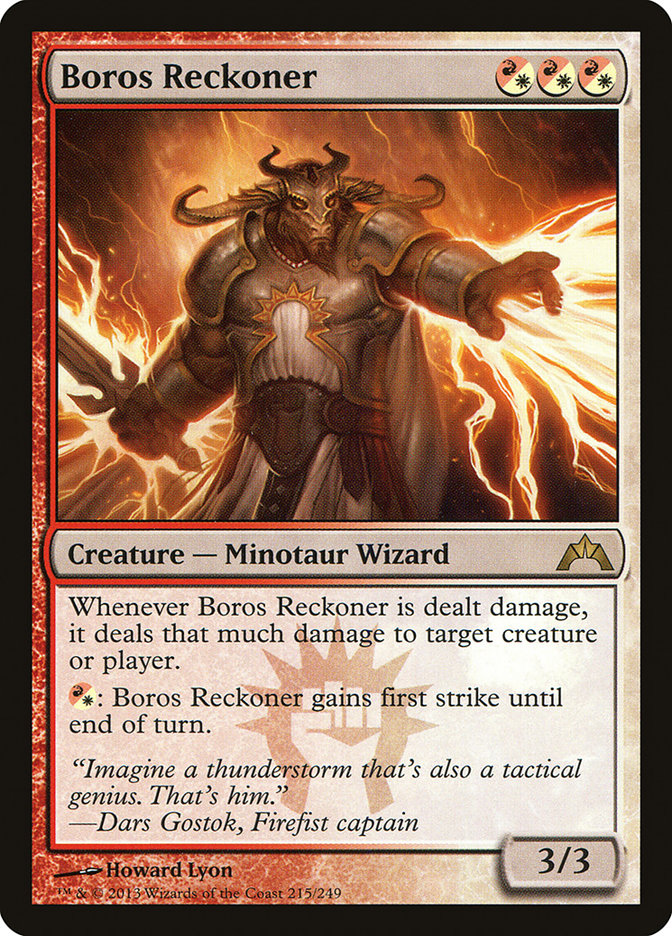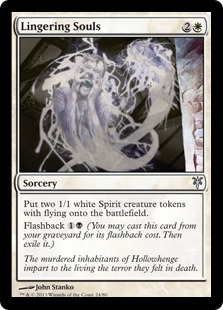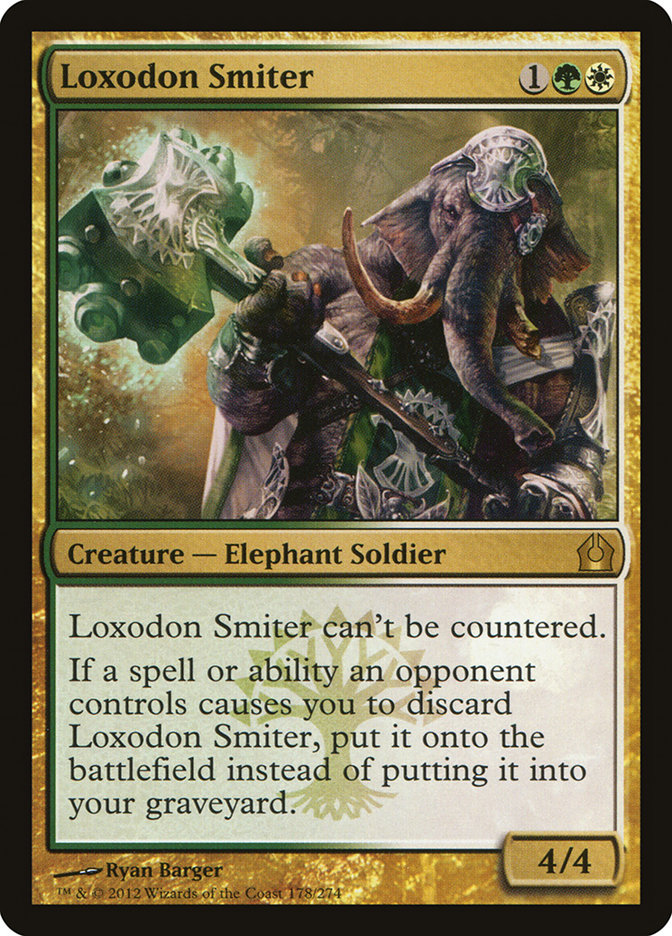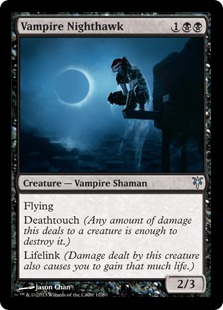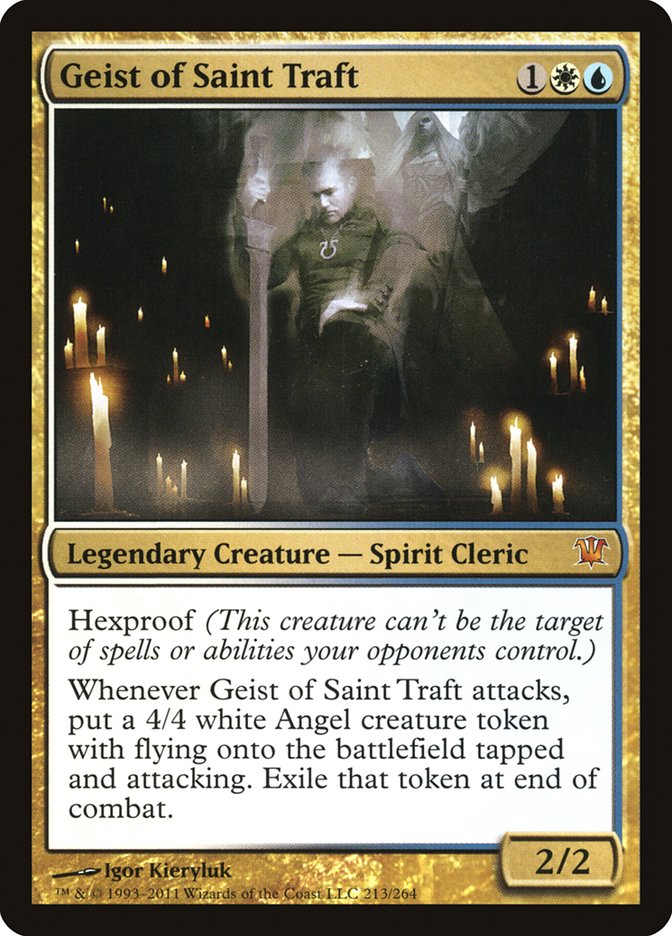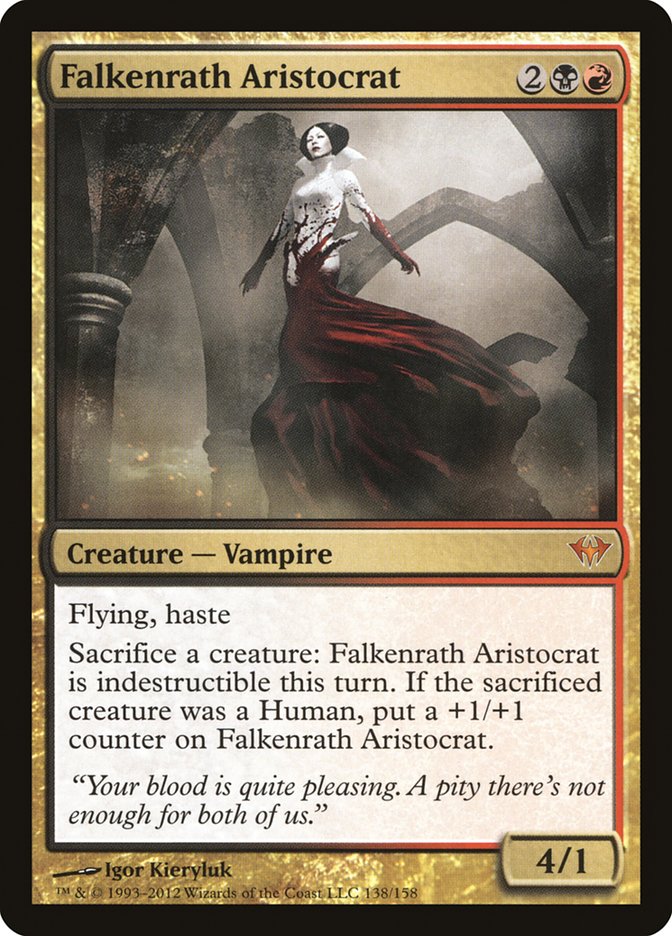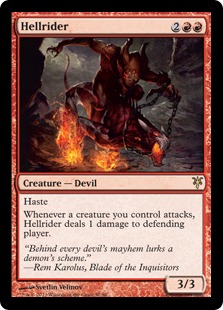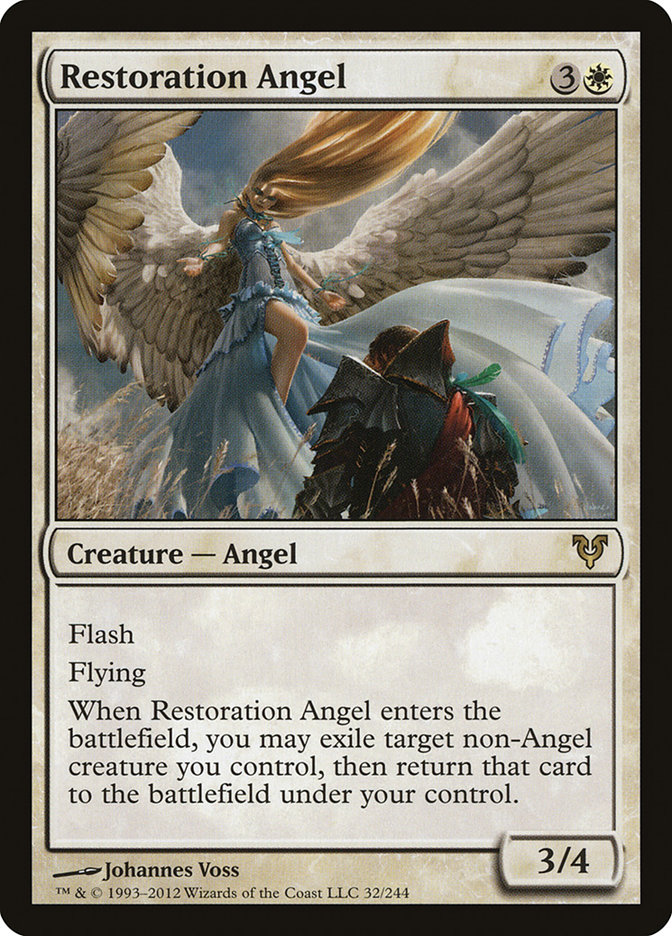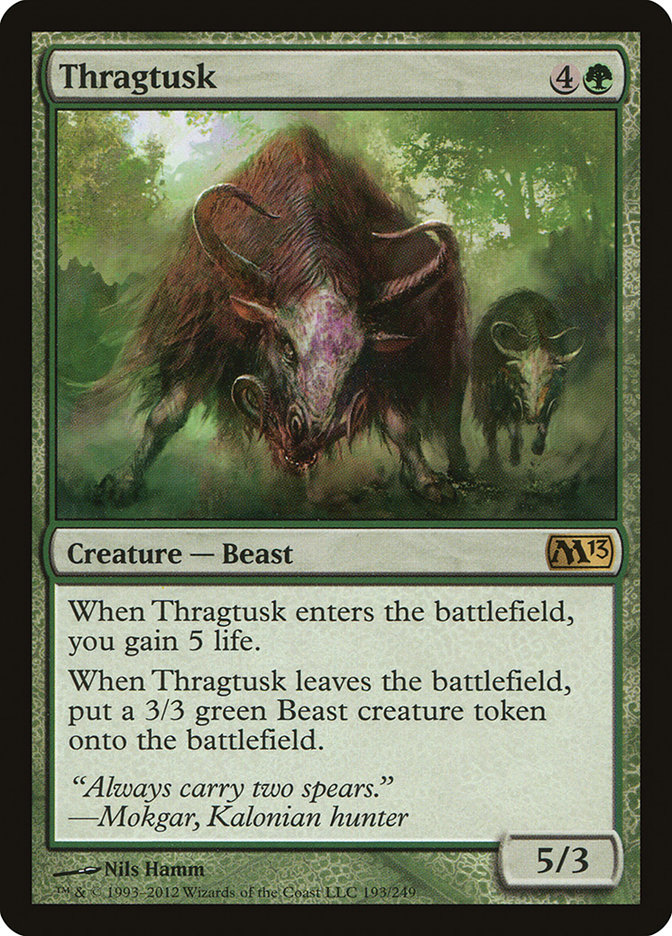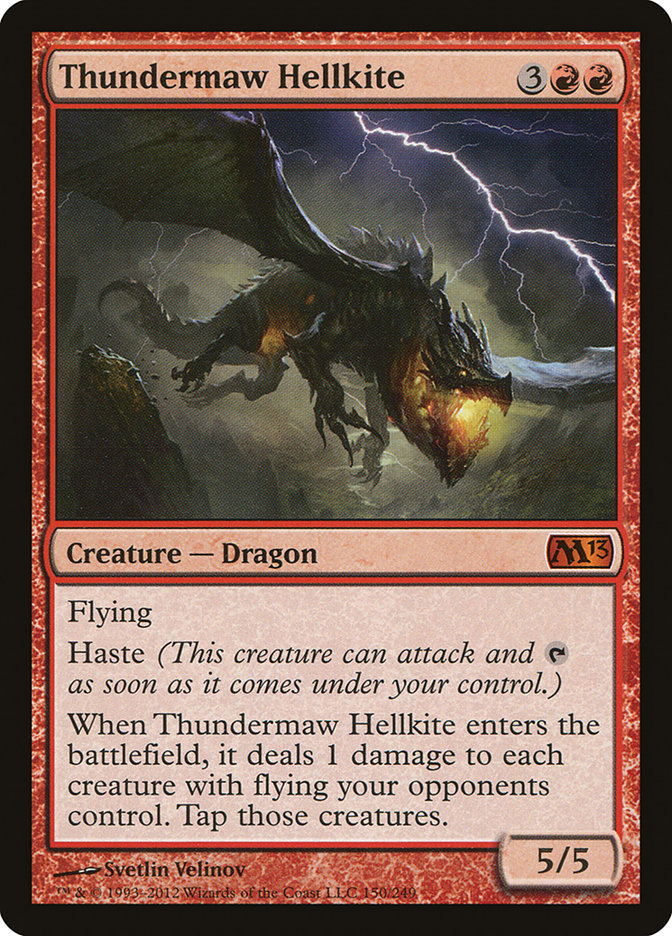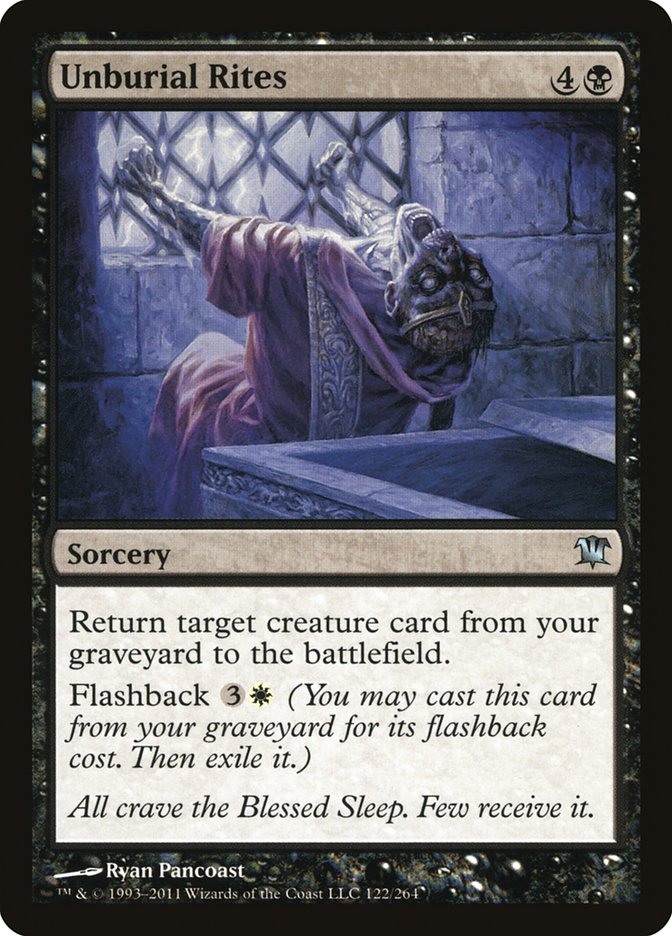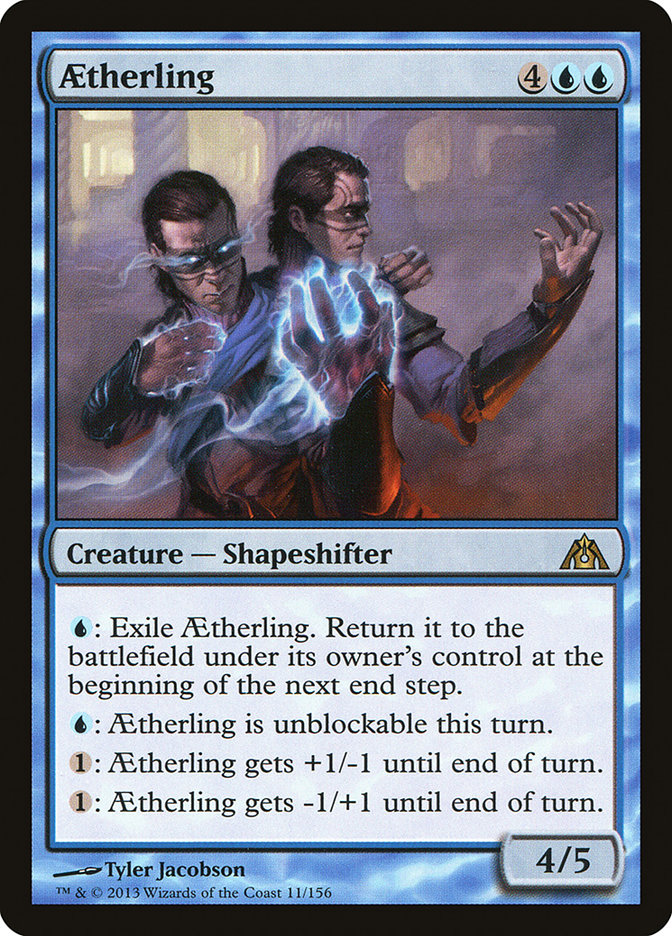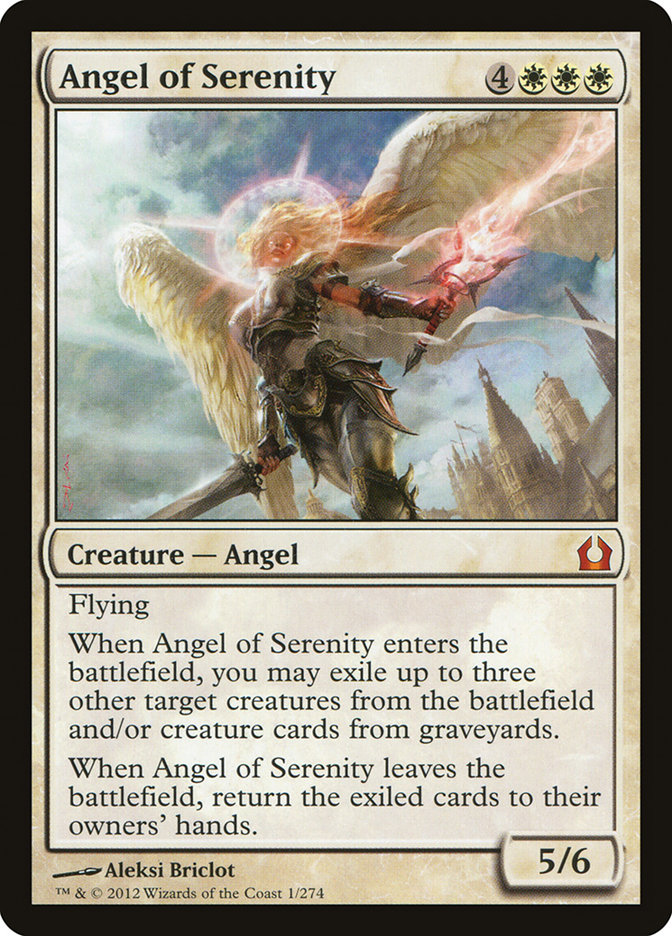I don’t know about you, but I am busy prepping for SCG Open Series: Somerset, New Jersey featuring the Invitational. Historically, I feel like I have had my best Constructed advantages either at the tail end of a format or in the first one or two weeks of a season. The Invitational’s Standard format is a great opportunity because with one Open down we will have a wink of M14 data but decks will not yet be perfectly tuned.
Near the end of a format, you can gain an advantage by surveying the decks everyone else plays, predicting the cards and archetypes they will choose, and making an assessment about what they are doing wrong in order to take advantage of those biases. The evaluation criteria you make rarely changes, whether it’s a desire for "speed" or "power" (and generally the exploitation of some inefficiency), but the route you take to get there might.
At Worlds 2009, the best players in the world ground themselves into a kind of Jund ghetto. They couldn’t decide if they wanted to play Putrid Leech or not, whether it was worth a Rampant Growth, and how expensive they wanted to go on finishers. Jund was becoming inbred to fight other Jund and managed to lose the crux of what made Jund Jund: playing the most efficient cards at each point.
The "controversy" over Putrid Leech was just the sorest of sore thumbs. Here was a two-drop that could hit for 100—a two-drop that was not trading with but beating up the opposing four drops—and people were cutting it because it didn’t do a great job of piercing a defensive Sprouting Thrinax. Given this context, it was not super difficult to figure out what the actual most efficient cards were and play four copies of all of them; well, all but Blightning.
Conversely, in the spring of 2011, I had one week of New Phyrexia to assess the field. Just enough New Phyrexia Standard to see what a Deceiver Exarch deck with too little land looked like; much of the success of the U/R Exarch Twin deck was nevertheless because decks [other] weren’t tuned yet. No way I would have gone 8-0 or whatever I did against Caw-Blade if anyone had figured out to play Dismember at that point like they did by the Invitational not long after.
Early or late. Inefficient and inbred. The Rock or Miracle Grow; Jushi Blue or Critical Mass.
To know where you are going, it is important to take a good look at the road. Decision making in Magic is all about context. Throwing a Lightning Bolt at your opponent on turn 1 will generally raise an eyebrow, but the same Lightning Bolt on turn 5—when they are in the low single digits—seems absolutely logical. It’s all about context and matching costs and prices rather than thinking in absolutes. Tapping out for a Gnarled Mass might be a format-breaking play if the most dangerous combat creature in the room is a Hand of Cruelty, but it is laughable if the default creature is a Tarmogoyf. Context.
Like I have sometimes said, if you and a buddy are in the woods getting chased by a bear, you don’t have to be faster than the bear—only faster than your friend. [Editor’s Note: Never go camping with Mike. Got it.] It is vital to know the speed and capabilities of the format. Understand the tools available and predict the tools as they will appear in the hands of others.
My strategy is to figure out what other people will play, predict as best I can the proportions of those, decide what is therefore invalidated, and then pick something that is either left not-invalidated or is simply faster or more powerful than the field.
Cavern of Souls
Ask the average tournament grinder what the Top 10 cards in Standard are and more often than not they’ll leave Cavern of Souls off the list; they would be wrong. This is a card that can be played in literally the widest variety of decks. It is played in the absolute fastest beatdown deck (Naya Blitz) and the absolute slowest strategic creature deck (U/R/W Control to ensure Aetherling resolves in control mirrors). Cavern of Souls might be at its [contextually] most dangerous in the middlest deck, Jund; control decks don’t really want permission against Blitz (too fast), so it is largely a mana fixer there. But the ability to resolve Sire of Insanity allows that deck to rip all the permission [that couldn’t stop the Sire] out of the opponent’s hand and push the advantage of being the beatdown.
Recognizing Cavern of Souls limits the efficacy of permission. If you are going to play a dedicated amount of permission—at least maindeck—you are likely making a bet against Cavern of Souls.
Cavern of Souls seems to have a neutral position in Standard with M14. There isn’t a huge incentive to play more permission in M14 (the best cards—Young Pyromancer and Kalonian Hydra—are active cards), and midrange decks like G/W and Prime Speaker Bant are already good against control decks.
Moorland Haunt
Four-fifths of the allied utility lands are awesome in Standard. Nephalia Drownyard, for instance, was a line in the sand in terms of deck design genius in the Black / Cuneo / Duke Bant deck some months back. I picked Moorland Haunt because it has the most off-book up side just now. Josh Cho played one as a 23rd land in his Bant Hexproof deck, allowing him to produce a buffable body even though volumes of removal. That said, Moorland Haunt probably loses some position with M14 because the new wave of decks are going to be not these colors.
Of the existing allied utility lands, Gavony Township seems to gain the most from M14 because there is a brand new flagship that wants nothing better than to play with other huge flagship creatures. Not only is it explicitly good with Kalonian Hydra, but in order for an active deck to play with cards like that, they often have to play a bunch of little bodies and Gavony Township gives you both a mana dump and a way to exploit it.
Champion of the Parish
Champion of the Parish is a surprisingly flexible card. I didn’t originally have it on my list, but I realized it sees play in Naya Blitz, The Aristocrats, and more dedicated Humans or WW-based decks.
A big chunk of the metagame is super-fast Blitz decks, and you have to recognize those in a run-down like this. My sense is that Champion of the Parish loses a bit with M14. It (obviously) relies heavily on Humans synergies, and though there are other good Humans, I just don’t see this backing up Young Pyromancer.
Recognizing the power of Champion of the Parish is a nod in the direction of turn 4 kills. Combating this card is about finding ways to slow down the opponent, trumping them on the battlefield, or otherwise containing their strategy, meeting their speed with great speed of your own. The importance then isn’t about having powerful sideboard answers but fast ones. Most Champion decks are resilient against Supreme Verdict anyway (Falkenrath Aristocrat et al.), so if your strategy is to survive and level past their game, you have to be both appropriate and faster. Ideally, you want to be able to answer [Champion] while simultaneously advancing your own game. The effective stuff here is generally known: Tragic Slip, Pillar of Flame, Searing Spear, Azorius Charm, etc.
Pillar of Flame
I had an interesting discussion about this card with Joshua P. Ravitz today. I read Pillar as kind of down in popularity, but he cautioned against this. Pillar was previously an anti Gravecrawler / Geralf’s Messenger spell in Standard but has evolved into more of an anti Voice of Resurgence card (and with that a bit of anti Strangleroot Geist).
Pillar of Flame is probably flat-to-up with M14. One of the possible new decks is going to snap up Pillars in a heartbeat, but as a 2/1 that deck’s prime flagship does too.
Burning-Tree Emissary
Hands down one of the most powerful, pervasive, cards in the format. It needs very little introduction but is seemingly on the downswing due to Loxodon Smiter et al. in Naya decks. There is pretty much nothing scarier to me than seeing one (or more) of these on turn 2.
If any of these cards demands respect in responses, it is Burning-Tree Emissary, though my opinion is that it gains little from M14. I think most viable decks are going to be optimized with this in mind with tools like Pillar of Flame to answer at speed and Supreme Verdict to answer the Emissary and whatever comes after en masse (the implication, of course, being that Burning-Tree Emissary never walks alone). Super important to have something because slower sit-there decks are just going to be bowled over.
Farseek
My favorite play of the last Standard Open (one of my only happy memories of that event) I played in was a Farseek play. I opened on Judge’s Familiar, and my opponent played his second land. He in fact played the wrong land since it came into the battlefield untapped and did nothing. I got in for one. Then on turn 3 he played a Blood Crypt untapped and cast a Farseek with mana open for the Familiar activation. I had the one Negate! Score two more for the little bird. Judge’s Familiar: even when it’s not gettin’ ya . . . it’s gettin’ ya.
Similar argument to Cavern of Souls here. Grab random grinder; solicit Top 10 list; is Farseek on it?
Farseek is a transformative card. It glues Nephalia Drownyard to Bant—or Kessig Wolf Run to Bant for that matter. And it does all its normal Ramp-y stuff at the same time. In fact, the baseline argument against Esper circa Nick Spagnolo Invitational run was simply that it didn’t have Farseek.
There is little "playing against" Farseek. There is trying to not fall too far behind Farseek. Not the same thing. Here is the difference between a weakness and a threat. Farseek decks have a possible negative angle of having too much mana and always have to have something to sink into (Kessig Wolf Run, Sphinx’s Revelation). Stop that and they can be stuck playing fair.
Rakdos’s Return
Rakdos’s Return, along with Cavern of Souls [plus Sire of Insanity], has a vitally important role in Standard. It is perhaps the sole limiting element against midrange blue control decks that focus on removal rather than permission. It is super easy to make a deck that is all removal + Snapcaster Mage and other card advantage and compete with the beatdown decks. Add Caverns of your own and you can be wildly ahead of other control decks. But Rakdos’s Return? Bam! Actual punishment for your arrogance.
There is no real playing against Rakdos’s Return. Either you play cards that are good against it (meaning permission) or you are too fast for the opponent to leave it in (Blitz). Not a whole lot of play otherwise unless you can position yourself with Loxodon Smiter or something (and I don’t think there is a huge amount of patience percentage there). My position is to just assume there aren’t a whole lot of Rakdos’s Return decks, which can be wildly inaccurate depending on how Reid Duke is feeling.
Snapcaster Mage
No surprises here; this is simply one of the finest two-drops ever printed [and we are talking about a game that hinges on great two-drops]. I am always surprised Snapcaster Mage is not more popular. Why isn’t it played in Legacy RUG Delver? Why is Augur of Bolas played over it ever, if not super often? Why ask why?
Snapcaster Mage can stay one of the best cards in the format and be a big loser via M14. Scavenging Ooze might just link up with Deathrite Shaman to present a huge problem for Tiago. There isn’t a whole lot of playing around that from the Snapcaster side; do you, um, have ways to deal with an opposing two-drop? That might be trickier that it sounds at first blush. If you only have Pillar of Flame, Searing Spear, and Azorius Charm for anti-cheap creatures, you can be giving up a tremendous amount of flexibility. It’s not hard to pull Scavenging Ooze out of Pillar of Flame range; only marginally harder for Searing Spear; Azorius Charm? The opponent has to expose it themself. Both cards are excellent; soon they will be going to war.
Voice of Resurgence
I snapped mine up at $25 hoping they would probably be justifiably good. They went straight into my Bant Hexproof deck and paid for themselves the first day out. Great! They are in a very real sense quite unremarkable.
Voice of Resurgence is one of the easiest cards to play around. Even a control deck can easily play around one. End of your turn blast it (you get a token or two), untap, and Supreme Verdict. No harm, no foul. Voice is punishing to players unfamiliar with its mysteries. For instance, if you attack with it and the opponent casts a Devour Flesh, you’ll just make a token and sacrifice it.
This card is best against Flash, good against beatdown for the most part, and reasonably weak against midrange. There are a lot of theories about this card; is it just a misplaced sideboard card? It’s powerful, sure, but really only when the opponent is playing into your hand, which isn’t something you can guarantee. Yet it’s been an almost universal four-of in Naya over the last few months.
Boros Reckoner
Probably my overall favorite creature in Standard. If you don’t deal with it, it will just invalidate your Thragtusk, and you don’t want that. Enabler of multiple combos, including infinite life (Boros Charm + Azorius Charm), thirteen damage (Blasphemous Act), and generic large damage packets (Harvest Pyre).
Like Voice of Resurgence, Boros Reckoner kind of has to pick its spots. Good against midrange (especially if they have Thragtusk), absolutely backbreaking for Blitz. Just a Gnarled Mass for control.
You will want some tools for this card. It is remarkably not hard to break up the Lucky Charms combo, but people don’t seem to remember that very often. Doom Blade from M14 is a huge upgrade in anti-Reckoner technology, though I see it flat-to-up with M14 as it is generally good against active and midrange decks.
Lingering Souls
Remember this card?
Thundermaw Hellkite happened.
Exclusive of Thundermaw Hellkite? Should be ruling the school.
Will Thundermaw Hellkites go up or down?
Loxodon Smiter
It took me too long to learn to appreciate this card. Generally a vanilla 4/4 for three mana (with lots of extra text), this card is obviously good enough. I was biased, I think, because it is not great against midrange. However, it is absolutely bonkers against beatdown.
There used to be a debate about Smiters versus Centaur Healer. No more. One lives though a Searing Spear. One trades with a Boros Reckoner.
I think the Saito bias towards Mizzium Mortars is a nod to his own style. You need to be able to deal four to get your beaters through this. So generally I am on board with Mortars main versus Smiter [and Restoration Angel]. Other options are generally mass removal or just going much bigger than a 4/4 (like I said, not exceptional against decks with lots of Thragtusk) or asking the Sphinx what you should do.
Vampire Nighthawk
Good often, but really busted against only one style of deck. I mean, trishing a small amount of advantage against red-style decks is something I have always been happy to try, but where this card really, really gets you is midrange green but below Jund in terms of power, flexibility, and removal.
I can’t tell you how many times I, personally, have stared helplessly against this thing or had to trade my beautiful Minotaur Wizard against it with Domri Rade. Even these kinds of green decks want Garruk Relentless or something as the card is obviously standard in Jund and can be played in B/R beatdown, Liliana of the Dark Realms decks, etc. You just have to be willing to fit a Searing Spear.
Geist of Saint Traft
No big story here. Simply the strongest offensive creature in the format. Bant Hexproof, All-American variants, decent amount of utility as a sideboard card in various U/W decks.
Geist of Saint Traft was already the best offense, but the new Clone rules make it harder to kill than ever. I have even more respect for Geist of Saint Traft than Burning-Tree Emissary. There are lots of specialized cards that you can use to kill this—Devour Flesh, Tribute to Hunger, Liliana of the Veil, and Renounce the Guilds are common and any kind of sweeper works of course—but sweepers are slow and Geist of Saint Traft is fast. You could always block with a Borderland Ranger. [Editor’s Note: Damn right I can.]
Sphinx’s Revelation
Obviously a powerful border of the format. The important thing to be aware of here is that you can’t durdle too much or you will just always lose to it. Or you can just play some yourself!
Falkenrath Aristocrat
Super effective on offense; pretty hard to kill; plays very, very well with others. It is probably a good idea to know how you are going to deal with Falkenrath Aristocrat because if you are going to win a tournament, you are probably going to have to face off against one more than once.
- Curse of Death’s Hold – Pretty much always works, but costs five.
- Tragic Slip – Will kill Aristocrat even if they can put a +1/+1 counter on it due to morbid.
Falkenrath Aristocrat will win games that almost no other creature will win; two of them will hold off an army while swinging for half the opponent’s life total. It works incredibly well with Blood Artist, Skirsdag High Priest, Doomed Traveler, Act of Treason, Zealous Conscripts . . . just tons of cards.
Falkenrath gains quite a bit with M14 due to Kalonian Hydra. I think Kibler’s Jund shell with Exava, Rakdos Blood Witch is going to be a popular choice at the Invitational. Best be able to kill creatures. Good creatures.
Hellrider
Hellrider is overall weaker than Falkenrath Aristocrat but still super good. It’s basically the card that spurs that internal monologue when you are playing against some sort of Mono-Red. Like "I hope he doesn’t rip Hellrider" or "maybe he doesn’t play Hellrider."
Hellrider is actually pretty easy to deal with; you just have to want to deal with it. I find that a problem—right before I have one of those monologues—is that I used my Searing Spear on a Flinthoof Boar two turns ago and now I am going to get pasted by a g-d Hellrider. Discipline will help you win Magic games in general, but for this list? Hellrider should probably be high on your list for creatures you want to kill. It’s not that hard, so you might have to resist the impulse to waste it on weaker threats.
Restoration Angel & Thragtusk
The "achievement unlocked" team probably has more written about them than any other cards on this list. They will still be good but substantially weaker than pre-M14. I don’t know if Imposing Sovereign will be popular early (though I guess not), but it matters for these guys that are premier blockers. Thragtusk competes directly with Kalonian Hydra, and I think at least in part due to the hype that is going to cost Thragtusk. Most importantly, Scavenging Ooze joining Deathrite Shaman as a graveyard hoser makes Junk Reanimator—one of the most popular Restoration Angel + Thragtusk decks—somewhat less popular. Still great cards of course.
Thundermaw Hellkite
One of the toughest threats to deal with consistently. Fairly depressingly developed (RR was not prohibitive enough to keep it from "too" wide of an adoption across many decks, though it did the job of containing what would have otherwise been rampant Lingering Souls). No reason to believe it will not be popular at the Invitational as a stalwart of Naya and an also-ran in U/R/W. Just make sure you have something beyond Azorius Charm to deal with this (as you are just going to have to deal with it again).
Unburial Rites
Look for a substantial drop in popularity here, again due to Scavenging Ooze. Might still be a Top 8 or so in its future. Too good of a card to ignore long term, but might see some disproportionate reactions from M14.
Aetherling
If your deck is good at the "not dying," there is probably nothing you would rather play than Aetherling. Aetherling only does one thing: if you are alive, it can race for you. It can defend, it can hit for eight a turn; at the end of the day, it has a job. Aetherling is no hero; don’t make a mistake about what is written on this card’s resume. Never forget it costs essentially seven+. Also don’t get it into your head that you can race it fairly. Last week I raced three Thragtusks and two Restoration Angels with admittedly two Aetherlings. It was work, but Morphling 2013 did its job.
The angles against Aetherling are somewhat limited: Pithing Needle, Debtors’ Pulpit, and Elite Arcanist are what I’ve got off the top of my head. Likely you will not want to play any of these unless you have some deck that soundly defeats non Aetherling strategies. You can try to commit overwhelming resources against it, but Aetherling decks tend to be Supreme Verdict decks. It’s work.
Angel of Serenity
Obviously a good card and consistently one of the top finishers in Standard. Will lose value with Unburial Rites (its primary driver). Just make sure you know how to accomplish an Angel loop against Esper.
- They typically want to kill you with Nephalia Drownyard. They can also put cards in your graveyard the regular old way.
- You have your best game with Cavern of Souls, but you just need to get an Angel with an Angel in the graveyard. You can loop these two cards against each other (ideally with friends) for a never-ending source of anti-attrition versus Esper or any deck slow enough to give you the time to set up.
So . . . where am I for the Invitational?
I want to minimize in-game decisions but play powerful cards. I generally don’t want to play a one-dimensional attack deck because anti-beatdown is outnumbered among the pillars only by the sheer number of different threats. The number and quality of (even passive!) control crushers is next up; did I mention that not only are there a huge variety of threats in Standard but the best of M14 are also threats? This is simply a poor time to have the wrong answers in front of you. I want to play new cards if possible but am not sure where their best home will be. It seems to me Hexproof gained some value, but I am not going to not play Geist of Saint Traft in that strategy.
The cards on this list I most want to play are Loxodon Smiter (ideally with Boros Reckoner) and Aetherling, but they don’t generally go together well.
The format seems soft on the popularity of answers against positional advantage cards like Farseek or Tracker’s Instincts but overloaded with great things to do from one to seven with your mana. As for the previous tops positional advantage deck, you’ve got to be brave going there against an upsurge of Scavenging Ooze, but I think you can take up the spirit of the multifaceted midrange without explicitly exposing your graveyard.
Here are some ideas I am going to work on:
How about this guy in a RUG shell, perhaps a la Peddle to the Metal? I certainly like drawing cards.
Trostani, Selesnya’s Voice –> Lavinia of the Tenth –> Conjurer’s Closet
You heard it here first.
LOVE
MIKE

